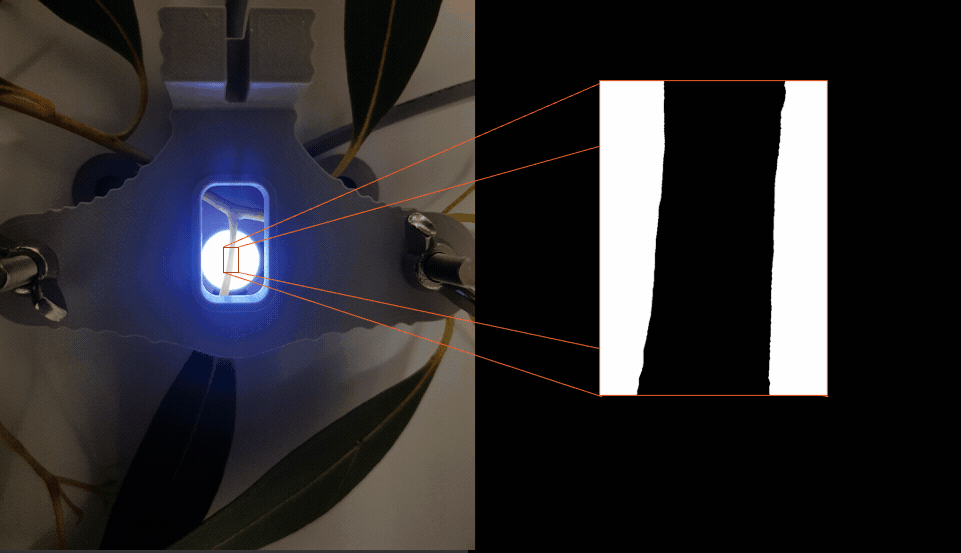Monitoring the water present in plants is notoriously difficult and challenging, yet critical to understanding whether plants are over/under watered, and how vegetation will respond to a changing climate. Using time-lapse cameras, researchers at the University of Tasmania are developing simple but ground-breaking techniques in the exciting field of ‘optical dendrometry’ that can provide accurate, high-resolution monitoring of the water status of plants.
With our time-lapse camera in ‘dendrometry’ mode, patterns of growth and daily cycles of water uptake and loss through transpiration can be monitored in unparalleled resolution and accuracy (changes of ~0.5µm). For more information, see publications below.

Relevant Publications
Bourbia, I., Lucani, C., Carins-Murphy, M. R., Gracie, A., & Brodribb, T. J. (2023). In situ characterisation of whole-plant stomatal responses to VPD using leaf optical dendrometry. Plant Cell and Environment, (April), 3273–3286. https://doi.org/10.1111/pce.14658
Bourbia, I., & Brodribb, T. J. (2023). A new technique for monitoring plant transpiration under field conditions using leaf optical dendrometry. Agricultural and Forest Meteorology, 331(May 2022), 109328. https://doi.org/10.1016/j.agrformet.2023.109328
Bourbia, I., Lucani, C., & Brodribb, T. J. (2022). Constant hydraulic supply enables optical monitoring of transpiration in a grass, a herb, and a conifer. Journal of Experimental Botany, 73(16), 5625–5633. https://doi.org/10.1093/jxb/erac241
Bourbia, I., Pritzkow, C., & Brodribb, T. J. (2021). Herb and conifer roots show similar high sensitivity to water deficit. Plant Physiology, 186(4). https://doi.org/10.1093/plphys/kiab207
Bourbia, I., Carins-Murphy, M. R., Gracie, A., & Brodribb, T. J. (2020). Xylem cavitation isolates leaky flowers during water stress in pyrethrum. New Phytologist, 227(1), 146–155. https://doi.org/10.1111/nph.16516